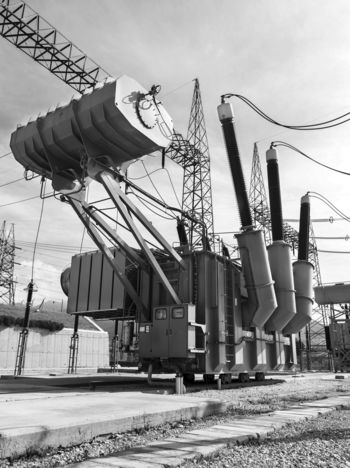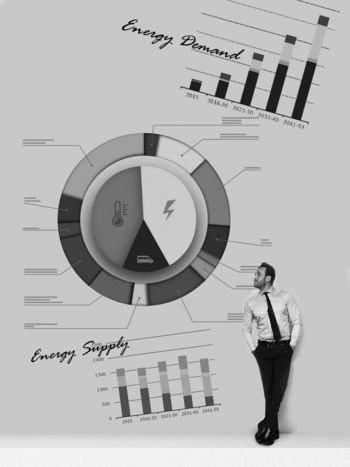The impact of the growing use of machine learning/Artificial Intelligence in the operation and control of Power Networks from an Operational perspective
As the complexities of operating modern power systems increase, many stakeholders throughout the energy value chain are turning to machine learning (ML) and artificial intelligence (AI) to manage these challenges. This shift is driven by systems' digitalisation and larger computational resources’ availability. For instance, transmission and distribution system operators can leverage these technologies to enhance load and generation forecasting, plan maintenance actions, and provide decision-making support tools for human operators in control rooms.
Members
Convenor (FR)
Antoine Marot
Secretary (PT)
Ricardo Bessa
Mouadh Yagoubi (FR), Sjoerd P.J. Kop (NL), Jochen Cremer (NL), Marija Ilic (US), Amarsagar Reddy Ramapuram (US), Ming Dong (CA), Karin Rodrigues (AU), Guangchao Geng (CN), Milos Subasic (DE), Adrian Kelly (IE), Alberto Kopiler (BR), Rohit Anand (IN), Teerasak Arunthanakij (TH), Victor Meza (CL), Fabian Heymann (CH), Wolf Berwouts (BE), Jingyu Wang (CN), Medha Subramanian (IE), Panagiotis Papadopoulos (UK), Koen Vandermot (BE), Samuel Young (UK), Rohit Trivedi (IE), Spyros Chatzivasileiadis (DK), Viktor Eriksson Möllerstedt (SE), Arnaud Zinflou (CA)
Introduction
Nevertheless, in financial markets, where the adoption of AI/ML has become widespread, the World Economic Forum have raised concerns about the over-reliance on technology and the diminishing role of human judgment. Reducing human oversight in decision-making processes can lead to a diminished understanding of the operational impact of AI-driven outcomes. Consequently, all stakeholders must comprehend the maturity and adoption levels of these technologies, their requirements, potential growth areas, and the associated risks and impacts.
CIGRÉ Study Committee C2, therefore, decided to establish the Working Group (WG) C2.42, “The impact of the growing use of machine learning/Artificial Intelligence in the operation and control of Power Networks from an Operational perspective”, in early 2022. The work done by the WG was concluded by mid-2024 in a technical brochure (TB) with seven chapters and one appendix to inform system operator professionals about how advances in AI/ML can influence and enhance critical improvements in power systems operations, handling, for instance, operational challenges like data overload, new operational scenarios, and increased cognitive load of operators and excessive manual processes.
Scope
The scope includes the following:
- What is their potential for assisting in decision-making in system operations and any vulnerabilities they must overcome?
- Capture and share operational learnings and experiences so far, enabling everyone to use this knowledge through use case prioritisation.
- Examine the challenges and barriers to AI/ML implementation by assessing deployment risks and identifying potential mitigations.
- What are their requirements for digitalisation, data, and IT processes? What new practices, business, and organisational processes are needed in organisations?
The WG D2.52 “Artificial Intelligence Application and Technology in Power Industry” brings complementary perspectives to this C2.42 WG.
Methodology
To establish a baseline of the processes, barriers, and applications where AI/ML is being used today in the energy sector, a survey was conducted between late 2022 and early 2023 over 109 participants (58 were system operators) from 26 countries. The survey identified the processes and applications where AI/ML is being used or considered for development, technical and non-technical barriers to development, and the enablers of AI/ML implementation within organisations.
In addition, a questionnaire was applied to five system operators and one vendor from the WG, focusing on how AI/ML could enhance their existing processes without compromising the strengths of their current systems; an extensive review of the academic literature and industry case studies was conducted to extract information such as AI model type and input/output, lessons learned, challenges, risks, and benefits and impacts. From this, five use cases were selected based on their maturity level and sector interest and used throughout the TB to illustrate the concepts and ideas in each chapter.
Given the extensive range of algorithms, methods, and frameworks in AI/ML, coupled with the rapid pace of development in this field, a taxonomy and classification system (see Chapter 2) were designed to define and standardise the terminology commonly used in the domain.
Chapter 3. Applications and Use Cases
The five use cases described in Chapter 3 are renewable energy forecasting, dynamic security assessment, alarm management and reporting assistant, visual inspection, and congestion management. All applications are or can be used in one typical end-to-end workflow of an operator, as shown in Figure 1, where the three modes of operation cognition (from Chapter 1) are also presented.



